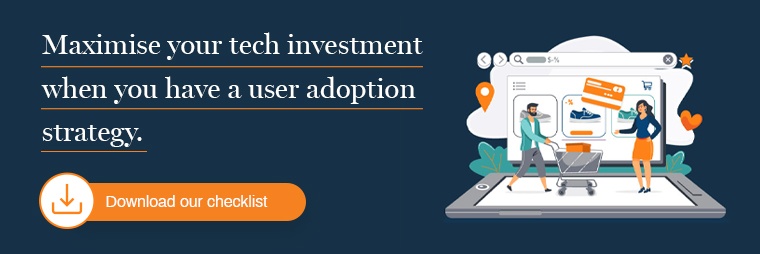We’ve been hearing about the retail apocalypse for the last decade. Increasing troves of consumers began moving to the web to fulfil their shopping needs. In response, retailers launched websites and started to sell their products or services online as well as in-store. That worked back then. Now? It’s not enough to launch an e-commerce website and call it your digital commerce strategy.
Digital commerce is not e-commerce
This is an important distinction to make and I’m going to start by explaining that. E-commerce is the practice of selling things online. Digital commerce is a strategy that allows customers to buy products and services online by providing them with an engaging, interactive experience.
This is how Gartner has defined it:
“Digital commerce enables customers to purchase goods and services through an interactive and self-service experience. It includes the people, processes and technologies to execute the offering of development content, analytics, promotion, pricing, customer acquisition and retention, and customer experience at all touchpoints throughout the customer buying journey.”

The key difference between e-commerce and digital commerce is that the latter also revolves around the experience you’re able to offer to your customers. It’s about providing the ideal, end-to-end customer experience - one that your target audience is looking for and will enjoy.
Generally, that could include:
- Fast page loading times
- High-quality, relevant imagery
- Engaging website design
- An experience that’s consistent across multiple devices (e.g. on mobile, tablet, desktop, browser)
- An experience that’s consistent across social channels (e.g. if your brand is active on social media, the tone, messaging and overall experience should be consistent across all of them)
- Email marketing messaging to match the website and social media channels
- Website content (e.g. blog posts, eBooks, videos etc) that provides customers with additional value and helps your brand appear as genuinely wanting to help your audience, rather than just wanting to make a sale
Are you seeing a theme? Today’s customers want seamless consistency. If they land on your website and move over to your Instagram account, they don’t want to feel as though they’ve moved over to another brand. Your Instagram account should be a continuation of your website.
The same principle applies if it’s vice versa. Or if your customers receive marketing emails. What about if they have to speak to someone e.g. your customer service team? Yep, the same principle applies! Everything must flow smoothly.
And this is just the beginning. Convenience is at the heart of many customers’ expectations. They don’t want to have to put in much effort to find what they need. So, many brands are also investing in technology to help them offer an increasingly personalised customer experience.
- Personalised product and service suggestions based on the individual customer’s previous interactions with your company (e.g. past searches, purchase history, customer service cases)
- Personalised search results (based on the above)
- Geolocation targeting
- Products/service recommendations based on the activities of other customers with similar profiles
Discover more personalisation examples for e-commerce here.
Digital commerce is about creating a better purchasing/selling experience
The concept of e-commerce websites helped brands offer a better purchasing experience for customers and selling experience for themselves. But digital commerce can help you create an even better one.
As mentioned earlier, customers are looking for convenience. They have questions that need answering and problems that need solving. And they need them now!
An exceptional purchasing experience is one that doesn’t make it hard for customers to find what they need. Fast page loading times, personalised product recommendations, intuitive search functionality - it’s all these features that can help customers quickly find their answers, be immersed in an excellent experience and remember your brand in future.
An exceptional selling experience links to this. If your customers can quickly find what they need/want, they’re less likely to need to reach out to your sales or customer service team for help. That leaves these teams with more time to focus on the customers who really need assistance (e.g. sales quotes, project proposals etc).

It also helps your sales team close leads - particularly handy if you’re in the B2B space. Earlier, I mentioned how website content can contribute to an ideal customer experience. Your customers may want to read up on your company or product before they decide to make a purchase. If you have content to support this need, that’s your chance to show off your expertise.
High-quality content that addresses customer pain points is just what you need to position yourself as a thought leader. What’s even better is that your content has been written in such a way that your customers will organically stumble on it via search engines! So, your customers won’t feel like they’re “being sold to” and they can take their time to make a decision.
You must be subtle about it - your content should support the products/services you’re selling without the latter being overpowering. And simultaneously, that content should offer a way to swiftly access the product/service (i.e. add it to basket).
The best digital commerce experiences require constant revamping
As technology advances and customer expectations rise, the need for you to up your digital commerce game will also grow. So, you must be prepared to constantly look for ways to refresh your digital commerce experience. Adopting the right technology for your business needs is an ideal first step.

Think AI to continuously improve product visualisation (e.g. personalised product recommendations or even automatically personalising the layout of your entire website to match a returning customer’s needs). Or, chatbots to answer common customer queries - to help you filter the customers who do need your sales team’s help from the ones that can self-service.
But for your business to maximise your technology investment, you must focus on the user adoption side of things.
Our checklist covers the steps you should know about. Download it below.

